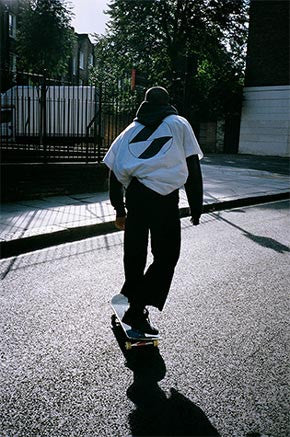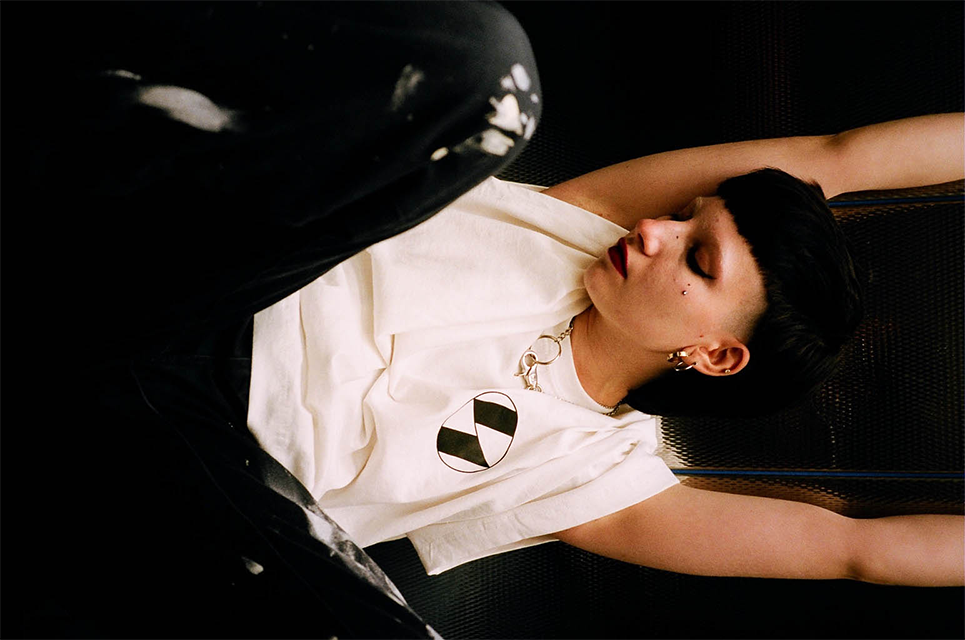It almost sounds cliche to say that punk is in Ollie Murphy’s blood, but for as long as he remembers, the 21 year old British illustrator had wanted to do something out of the ordinary.

Interview by Clifford Loh
 “Most of us aren’t mean, we try to be good to people. That is real punk, we accept people for who they are, and we try to be cool to people.”
“Most of us aren’t mean, we try to be good to people. That is real punk, we accept people for who they are, and we try to be cool to people.”
To converse with Murphy is to realise that few young artists are as astute in speaking their mind as he is. On one hand, you see him wrestle with his youth and inexperience, constantly re-evaluating his speech, always cautious of sounding presumptuous. On the other, he brings up topics as diverse as the politics of the creative industry, the nature of art-making and his creative work.
Well, ‘work’ is perhaps not the right term, as he describes photography and illustration as a lifelong hobby. “When I studied Graphic Design at [Central] St Martins, I met this photographer named Dave Henley when I was about 17. He documented the reggae scene in Jamaica during the ‘70s, and they were some of the most beautiful photographs I had ever seen. When I saw those photographs and I saw how passionately he talked about them, right then I decided that I wanted to take photographs almost every day. Because it just influenced me so majorly and we used to talk a lot, I started to get really interested in Japanese photographers. At the time, he had a lot of Japanese photo books and he used to show them to me. That was when, for the first time I really, seriously decided I wanted to pursue photography.” Ollie muses more on the subject as he readies himself for his upcoming shoot at Cherry Discotheque with The Salvages for the new tee shirt launch.


I was looking through your portfolio, and noticed a lot of images you shot of Liz. How do you describe your friendship with her?
I’ve been into the punk and rock scene in the UK since I was 14. It is just years and years of knowing these people, because if you are kicking around in the same scene starting from 14 all the way till 21, you are bound to make friends and develop close friendships with these people. What I realized is that loads of people in the punk scene are doing other interesting things as well. For instance, I have a friend who used to be majorly into punk and now he’s a fine artist working in South London. There are lots of people who are like that from the punk scene, who go on to do other really interesting things. It is quite easy in a way to make those connections. That is how I met the skater Fergadelic. I don’t think there could have been any other way that I would have met that guy. I saw him walking down the street, wearing an Infest t-shirt, and I recognized it because it was an old American power violence band. We connected straight away, because of the way we know the bands and we understood the punk scene.
We once interviewed him for an earlier story when he did something with Marc Jacobs. That was how we got in touch. He’s pretty cool.
He is really smart. And he is a really nice guy.
Where do your ideas usually come from? What are your inspirations?
In terms of photography, I just walk around where I live all the time, and try to look out for things. I’ve always got my camera in my pocket or around me, so if anything happens, or if there’s anything that I’m interested in, I never miss it. It’s really frustrating when I walk out of my house but I forget my camera, and something happens right in front of me. It is the worst feeling. So that is where my ideas for photography come from. In terms of painting and illustration, I think most of it comes form my head. I have got an original sketchbook by Robert Crumb, who is a '60s illustrator, at home. That is a big influence for me. I sit around looking at Robert Crumb sketchbooks. He did one of the Janis Joplin covers and loads of all stuff.

So it is your environment and neighbourhood that inspires you? Which part of London do you live in?
I live in Camberwell.
Who are some of the artists you have documented that have inspired you?
Kyle Platts, Rob Whoriskey, Hetty Douglas, Billy Childish. Ellie Andrews as well. She is a really good painter. I’m really interested in painters at the moment, because their studios are always really interesting. I’ve been to a couple illustrator studios and they don’t have anything, but painters have been really interesting to photograph. Hetty Douglas is probably one of my favourite modern painters.
Do you know the Japanese photographer Daido Moriyama?
Daido Moriyama is probably one of my favourite photographers of all time!
He has an exhibition going on in Singapore, as part of the Singapore International Photography Festival, and one of his family members flew down to explain his work. I think his work is pretty seminal in the photography world. I once heard of this story from the festival's curator, that he shot a rolls of film, burnt it and got a publisher to publish all the photos that were from the burnt film.

day burning negatives. I was trying to do something like that and they just didn’t look as good as Daido Moriyama’s.
He probably burnt them in a different way.
Daido Moriyama, technically, is the king, even though he shoots with a point-and-shoot camera. He is a really clever photographer.
Are there any future projects that you hope to realize?
My dream project would be to photograph anyone I want, with huge rolls of paper with interesting backgrounds in the studio. I want to pick out as many people as I can, and photograph all of them because I love portraiture, as well as to paint. When I get the money, I am going to get huge canvases and start painting. I went to the Abstract Expressions Exhibition at the Royal Academy in London recently, and I saw artists like Jackson Pollock. For me, one really great artist is William de Kooning. I saw his work and was really inspired.
Ah, abstract expressionism…
I went to the William Klein exhibition about four years ago, and I was thinking about it the other day. William Klein did this amazing thing in which he printed a massive photo negative and painted on top of it. I thought that was such a great idea. I don’t know exactly what I want to do, but I do know it is going to be a combination of photo prints and painting, or anything in between.


Is there anything in contemporary culture that you have strong feelings about?
It really frustrates me when I see big companies ripping off small designers and illustrators. That really makes me angry. Urban Outfitters is doing that a lot and I actively make the decision not to walk into the place, because it makes me so mad. Also, I don’t like conceptual art that is shallow and made for an audience just to sell it, although I'm a huge fan of conceptual art. I think that is where people go wrong when they hate conceptual art, because of the business of having to sell it. I think there is amazing conceptual art out there. It’s just that the business prospects for it are not really good. I guess there isn't a lot in contemporary culture that frustrates me other than shallowness. There are actually a lot of things in contemporary culture that excite me.
So what are the things that excite you?
Records, bands, books and even Instagram. Instagram is good, especially for painters. Painting used to be very solitary, but you can now check out works by other small artists who kind of work similarly to you, and it allows you to gauge where your work fits in.
To find your own community?
Yes, which I find very important. I feel like I found that even with people in America. I have friends in LA and New York. I feel like we sort of fit into the same category, which is really fascinating because before this, it might have felt quite isolated. There are so many things that excite me. I want to study to be an art teacher at an art school. I’m doing an MA right now, and after that I can do a postgraduate degree, because I want to work at an art school. That really excites me. I think it is very interesting that you can have five people in a room, and you can say, “draw that person,” and all five of them could do it in a completely different way. Something as simple as that really excites me. I think it is really interesting, the way people see things and make things.
Models
-
Liz Harris, Loyd Clipson and Oscar Reynolds
